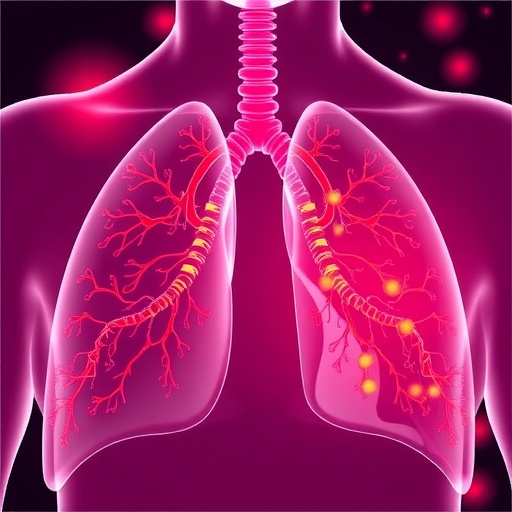The American Association for Cancer Research (AACR) has unveiled the 15th edition of its annual Cancer Progress Report, a pivotal document that chronicles the latest advancements, statistics, and challenges in the field of oncology. This comprehensive report highlights the profound impact of federal investments in cancer research, spanning basic, translational, clinical, and population sciences, which have collectively fueled groundbreaking discoveries and improved patient outcomes. By emphasizing both innovative scientific breakthroughs and real-world stories of patients whose lives have been transformed, the report paints an optimistic yet urgent picture of the ongoing battle against cancer.
One of the most compelling sections of the report centers on blood cancers, illustrating how strides made in hematologic malignancies over the past decade have catalyzed progress across a range of cancer types, including solid tumors and non-cancerous diseases. Over recent years, precision medicine and immunotherapy advancements have reshaped therapeutic landscapes, especially through the FDA’s approval of numerous new therapies. These include the groundbreaking T-cell receptor (TCR) T-cell therapy for soft tissue sarcoma and IDH-targeted therapies for brain tumors, which underscore the advent of highly specialized treatments tailored to genetic and molecular cancer profiles.
The regulatory landscape has witnessed impressive activity, with the FDA approving 20 new anticancer therapeutics from mid-2024 to mid-2025. Among these, antibody-drug conjugates (ADCs) have emerged as critical agents, combining the specificity of antibodies with potent cytotoxic drugs to deliver targeted cancer cell killing. The introduction of wearable medical devices employing low-intensity electrical fields to inhibit tumor growth represents a novel, non-pharmacologic approach to lung cancer management, highlighting the expanding variety of innovative treatment modalities.
The AACR report documents a remarkable 34% decline in the overall cancer mortality rate in the U.S. from 1991 to 2023, a testament not only to medical advances but also to successful public health efforts like smoking cessation. This decline translates into over 4.5 million cancer deaths averted, signaling one of the most significant public health achievements in recent memory. Parallel to mortality improvements, long-term survivorship has surged, with five-year relative survival rates climbing from 49% in the late 1970s to 70% for diagnoses made between 2015 and 2021. As of 2025, the nation counts more than 18.6 million cancer survivors, nearly 6% of the population, highlighting the evolving landscape of cancer care.
Blood cancers, in particular, have been at the forefront of precision medicine breakthroughs. The journey, commencing with imatinib’s (Gleevec) 2001 approval for chronic myeloid leukemia (CML), revolutionized treatment paradigms by targeting the BCR-ABL fusion protein driving disease progression. This molecularly targeted therapy transformed CML from a terminal illness into a chronic condition manageable with oral medications. Subsequent approvals of additional targeted agents for CML have reinforced this therapeutic class’s indispensability. Notably, chimeric antigen receptor (CAR) T-cell therapy has redefined immunotherapy by engineering patients’ own T cells to recognize and destroy malignant cells. Since its initial 2017 approval, CAR T-cell therapies have extended to various hematologic cancers, such as leukemia, lymphoma, and multiple myeloma, illustrating immunotherapy’s expanding reach.
Impressive epidemiological data further corroborate therapeutic successes: non-Hodgkin lymphoma mortality has fallen by 43%, and multiple myeloma deaths have declined by 31% since 1991, even amid rising incidence rates. Recent FDA approvals within the blood cancer domain include revumenib, a first-in-class menin inhibitor targeting acute leukemias with specific genetic alterations, demonstrating the increasing precision of novel molecular targets. Similarly, denileukin diftitox-cxdl introduces a new cytotoxic fusion protein for treating cutaneous T-cell lymphoma, while the CAR T-cell therapy obecabtagene autoleucel broadens treatment options in acute lymphocytic leukemia. These advancements signify an accelerating pace of innovation tailored to molecular pathology.
Despite these successes, cancer remains a formidable public health threat, with projections estimating over 2 million new cases and upwards of 618,000 deaths in the U.S. for 2025. The overall incidence rates have plateaued in recent years; however, certain malignancies, notably pancreatic, liver, uterine cancers, HPV-associated oral cancers, and lung cancer in never-smokers, are increasing. Particularly concerning is the rise in early-onset cancers—those diagnosed before age 50—with colorectal cancer exemplifying this trend. Data reveal a disturbing annual 5% increase in incidence among younger adults, accompanied by a 1.1% rise in mortality rates, indicating a pressing need for research into underlying etiologies and improved early detection.
Emerging hypotheses to explain early-onset cancer incidence suggest complex interplay between environmental exposures and lifestyle factors. Potential contributors include the pervasive accumulation of microplastics within the human body, widespread antibiotic use impacting microbiotas, and exposure to per- and polyfluoroalkyl substances (PFAS), a class of “forever chemicals” with suspected carcinogenic properties. Additionally, certain pathogenic strains of Escherichia coli may play a role, illustrating how microbiome alterations and toxic environmental factors could synergize to elevate cancer risk, particularly in younger populations.
The report underscores enduring disparities in cancer outcomes, where socio-economic, racial, and geographic factors contribute to uneven burdens of incidence, mortality, and access to care. These disparities pose significant public health challenges and call for targeted interventions and policies that address systemic inequities within healthcare systems. Achieving equity in cancer prevention, diagnostics, and treatment remains an essential component of the national cancer control strategy.
One of the most urgent calls from the AACR Cancer Progress Report 2025 is for sustained and robust federal funding for medical research, principally through the National Institutes of Health (NIH) and the National Cancer Institute (NCI). The report reveals that NIH funding is not only paramount to scientific progress—contributing to nearly all FDA drug approvals in the last decade—but also a powerful economic engine. Every federal dollar invested in NIH translates into $2.56 in economic activity, supporting hundreds of thousands of jobs and driving innovation ecosystems nationwide.
However, recent turmoil and instability at the NIH risk undermining these gains. Research delays, freezing of funds, and hiring constraints threaten to demoralize and shrink the scientific workforce. This turbulence may prompt promising investigators to leave academia or seek opportunities overseas, imperiling America’s global leadership in biomedical research. Furthermore, these disruptions could slow down the translation of scientific discoveries into effective therapies, impeding progress against cancer and costing lives.
Despite these challenges, bipartisan support in Congress offers hope. Key legislators from both parties have advocated for increased investment in NIH and NCI for Fiscal Year 2026, highlighting the political consensus on the importance of medical research. The AACR’s report presses lawmakers to release frozen funds, prioritize early-career scientists, defend the integrity of peer review processes, and maintain public health efforts in prevention and screening programs.
In summary, the AACR Cancer Progress Report 2025 presents a nuanced landscape of momentous progress paired with critical vulnerabilities. It highlights a future where precision medicine and immunotherapy push the boundaries of cancer treatment while emphasizing the indispensable role of stable funding and policy support. The momentum generated by scientific innovation can only be sustained if dedicated resources empower the research community and equitable access to care becomes a universal reality. Continued vigilance, investment, and collaboration are essential to transform cancer from a life-threatening disease into a manageable condition for all.
Subject of Research: Cancer Research and Medical Advancements
Article Title: AACR Cancer Progress Report 2025: A Decade of Breakthroughs Amidst Funding Challenges
News Publication Date: 2024
Web References:
American Association for Cancer Research: http://www.aacr.org/
AACR Cancer Progress Report 2025 Download Links (JPG graphics and more) available from AACR media contacts
References: FDA approvals, NIH funding data, and epidemiological statistics cited within AACR Cancer Progress Report 2025
Image Credits: Provided by AACR, downloadable via their media portal
Keywords: Cancer research, blood cancer, immunotherapy, precision medicine, NIH funding, cancer mortality, early-onset cancer, cancer disparities, CAR T-cell therapy, antibody-drug conjugates
Tags: AACR Cancer Progress Report 2023advancements in precision medicineblood cancers research progressbreakthroughs in oncologychallenges in cancer researchclinical trials and patient outcomesFDA approvals for cancer therapiesfederal funding in cancer researchhematologic malignancies advancementsimmunotherapy developments in cancer treatmentpersonalized cancer treatment strategiesT-cell receptor therapy innovations





